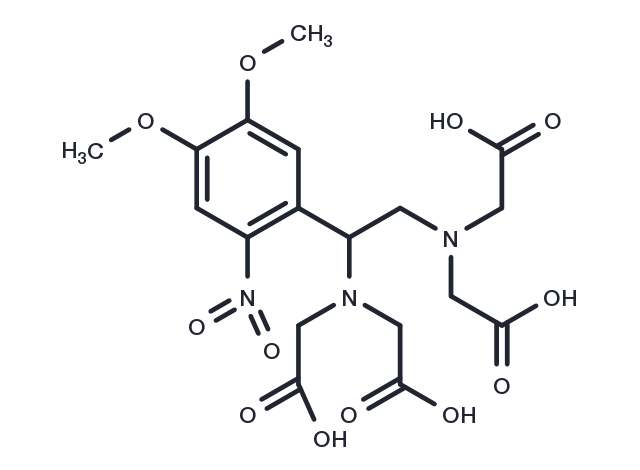Powder: -20°C for 3 years | In solvent: -80°C for 1 year


DMNP-EDTA is a caged Ca2+ chelator which photouncages Cu2+ ions for light-controlled gene expression in yeast.

| Pack Size | Availability | Price/USD | Quantity |
|---|---|---|---|
| 25 mg | 6-8 weeks | $ 1,520.00 | |
| 50 mg | 6-8 weeks | $ 1,980.00 | |
| 100 mg | 6-8 weeks | $ 2,500.00 |
| Description | DMNP-EDTA is a caged Ca2+ chelator which photouncages Cu2+ ions for light-controlled gene expression in yeast. |
| Synonyms | DMNPEDTA, DM-Nitrophen, DM Nitrophen, DMNP EDTA |
| Molecular Weight | 473.39 |
| Formula | C18H23N3O12 |
| CAS No. | 117367-86-9 |
Powder: -20°C for 3 years | In solvent: -80°C for 1 year
You can also refer to dose conversion for different animals. More
bottom
Please see Inhibitor Handling Instructions for more frequently ask questions. Topics include: how to prepare stock solutions, how to store products, and cautions on cell-based assays & animal experiments, etc.
DMNP-EDTA 117367-86-9 DMNPEDTA DM-Nitrophen DM Nitrophen DMNP EDTA inhibitor inhibit
